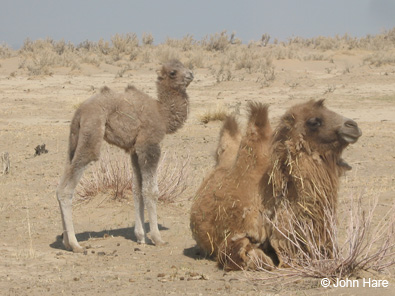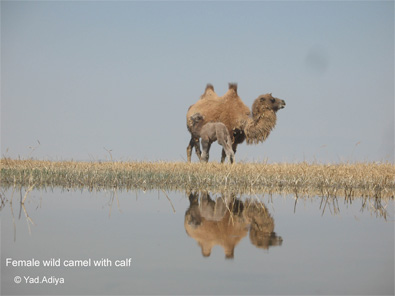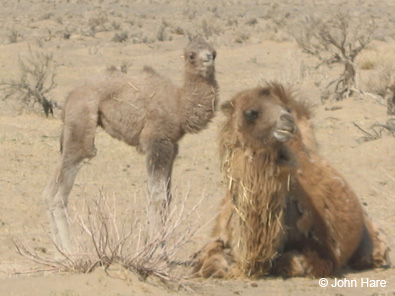Earlier this year our Mongolian EDGE Fellow working on the Bactrian camel, Adiya, and John Hare from the Wild Camel Protection Foundation (WCPF) visited the Zakhyn Us captive breeding centre. John sent us this update on the captive breeding programme:
There were four successful births to the wild Bactrian camels at their captive breeding site at Zakhyn Us, Mongolia, this year. The calves are strong and are now over two months old. And what is even better is that three calves are female and one is male, which is the ratio we hoped for.
When the captive wild Bactrian camel breeding programme was started in 2004, there were 12 wild camels. Four years later there are 21. It takes twice as long to build up a camel herd than it would a herd of horses or cattle, for example, because the gestation period is long, at 13 months. Therefore the build up has been maintained at a successful rate and we are pleased with progress.
This increase in captive wild camel numbers has meant that we can now start investigating a site for the initiation of a release programme. We found a potentially suitable site in the Great Gobi Specially Protected Reserve B where the wild Prjewalsky (takhi) horse is currently being released. The administrators of the wild horse programme have no objection to working with the Wild Camel Protection Foundation (WCPF) and the area appears to be suitable, apart from the presence of a number of wolves.
~So this is all good news from Mongolia
The Zoological Society of London (ZSL) will be supporting the WCPF to further develop and strengthen the captive breeding programme. Both organisations hope to work with the Mongolian government and other local organisations to undertake a full feasibility study on the proposed release site and build a strategy and guidelines for camel reintroduction.
If you would like to support Bactrian camel conservation, please click here.


